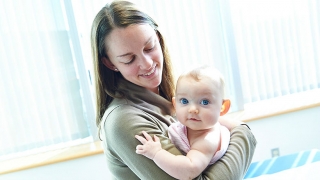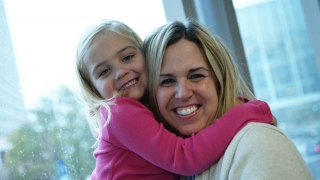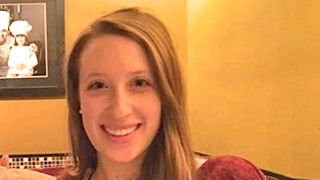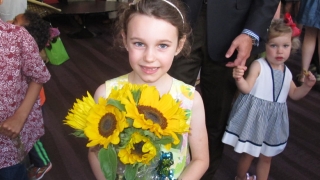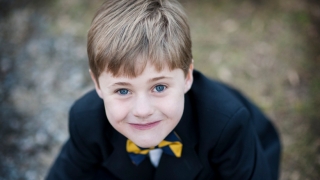When Jason was born on Sept. 4, 1999, he was still encased in his amniotic sac. The amazed nurses and doctors at Abington Memorial Hospital told his parents, Fayrouz and Tarig, that this phenomenon happens so rarely, infants born this way have long been considered good-luck babies.
For little Jason, this omen couldn't have been more accurate. Jason was born with tricuspid atresia and a series of other heart conditions, including transposition of the great arteries, a ventricular septal defect (VSD), and right ventricular hypoplasia. Without a few lucky coincidences, he may never have survived his first few days.
A scare for Jason
 The first bit of luck happened the day after Fayrouz and Jason were evaluated and discharged from the hospital. Jason wasn't latching on or breastfeeding, and the hospital sent a visiting nurse to their home to provide lactation support.
The first bit of luck happened the day after Fayrouz and Jason were evaluated and discharged from the hospital. Jason wasn't latching on or breastfeeding, and the hospital sent a visiting nurse to their home to provide lactation support.
"She checked Jason and said that something wasn't right, that he was breathing way too fast," Fayrouz remembers. The nurse called 911, and Jason was rushed back to Abington. By then, he had fallen into a coma, was bleeding internally and experiencing multiple organ system failures. The medical team worked madly to discover why his tiny body was shutting down. Fayrouz and Tarig were told to prepare for the worst.
"The pediatrician told me she thought my baby was dying and asked if it was OK to baptize him in the emergency room. It was agonizing," she remembers. "I had never seen my husband cry before or since. It was devastating."
In another stroke of chance, a pediatric cardiologist from The Children's Hospital of Philadelphia was at Abington Hospital that day in connection with another case. The doctors called him in to look at Jason.
"He knew immediately what was wrong. He ordered medication for Jason and explained to us that he was born with only three chambers in his heart," says Fayrouz. Jason was stabilized and rushed to CHOP. "The doctors told me that if I had gotten to the hospital two hours later, his valve would have closed and Jason would have died," Fayrouz says.
One careful step at a time
Because of Jason's multiple issues, the expert team at CHOP's Cardiac Center took things one careful step at a time. His first surgery, the Norwood reconstruction, was performed by Thomas Spray, MD, chief of Cardiothoracic Surgery, when Jason was 10 days old. The Cardiac Center team excels at the most complex surgical procedures, as well as the intensive care required before and after these surgeries.
Because of Jason's extended time at CHOP, the Hospital staff helped arrange for Fayrouz and her husband to stay nearby at the Ronald McDonald House.
"There was always a possibility for both of us to be with Jason at all times. I was able to talk to Jason, hold him, massage him, and they let us play classical music for him while he was in the coma," Fayrouz says.
“I can't say enough about the Cardiac Center team. They saved Jason. They shared whatever information we needed and never made us feel like we were asking stupid questions.”
Jason needed three more surgeries before his fifth birthday — a hemi-Fontan procedure when he was 6 months old, a lateral tunnel fenestrated Fontan procedure when he was 3 years old, and implantation of a dual-chamber pacemaker, which he received when he was 4 years old.
Lifelong care for Jason’s heart
Today, Jason is a thriving 14-year-old. Although his surgeries are long past, he continues his relationship with the Cardiac Center and its Single Ventricle Survivorship Clinic, part of the Fontan Rehabilitation, Wellness, Activity and Resilience Development (FORWARD) Program. This innovative program provides specialized long-term follow-up focused on the unique medical needs of patients who’ve undergone surgery for single ventricle defects.
And as Jason approaches adulthood, he will have the resources of the Philadelphia Adult Congenital Heart Center available to him. This joint program between CHOP and Penn Medicine provides comprehensive care for the rapidly growing population of adults living with congenital heart disease.
But for now, Jason is busy with the interests of a typical adolescent boy. He loves football and facts. He plays piano and tennis, runs track, and is at the top of his class. He loves to travel to exotic locales with his parents and his 12-year-old sister. Jason’s one restriction is that he is not permitted to play any contact sports.
"If that is the extent of what he is limited to, I will take it!" says Fayrouz. "He is my miracle child."
Video update from Jason
In this short video, Jason shares his experiences being treated at the Cardiac Center, from his earliest memories as a baby to how things are going today, and offers advice to other kids with congenital heart disease.
Originally posted: February 2014
